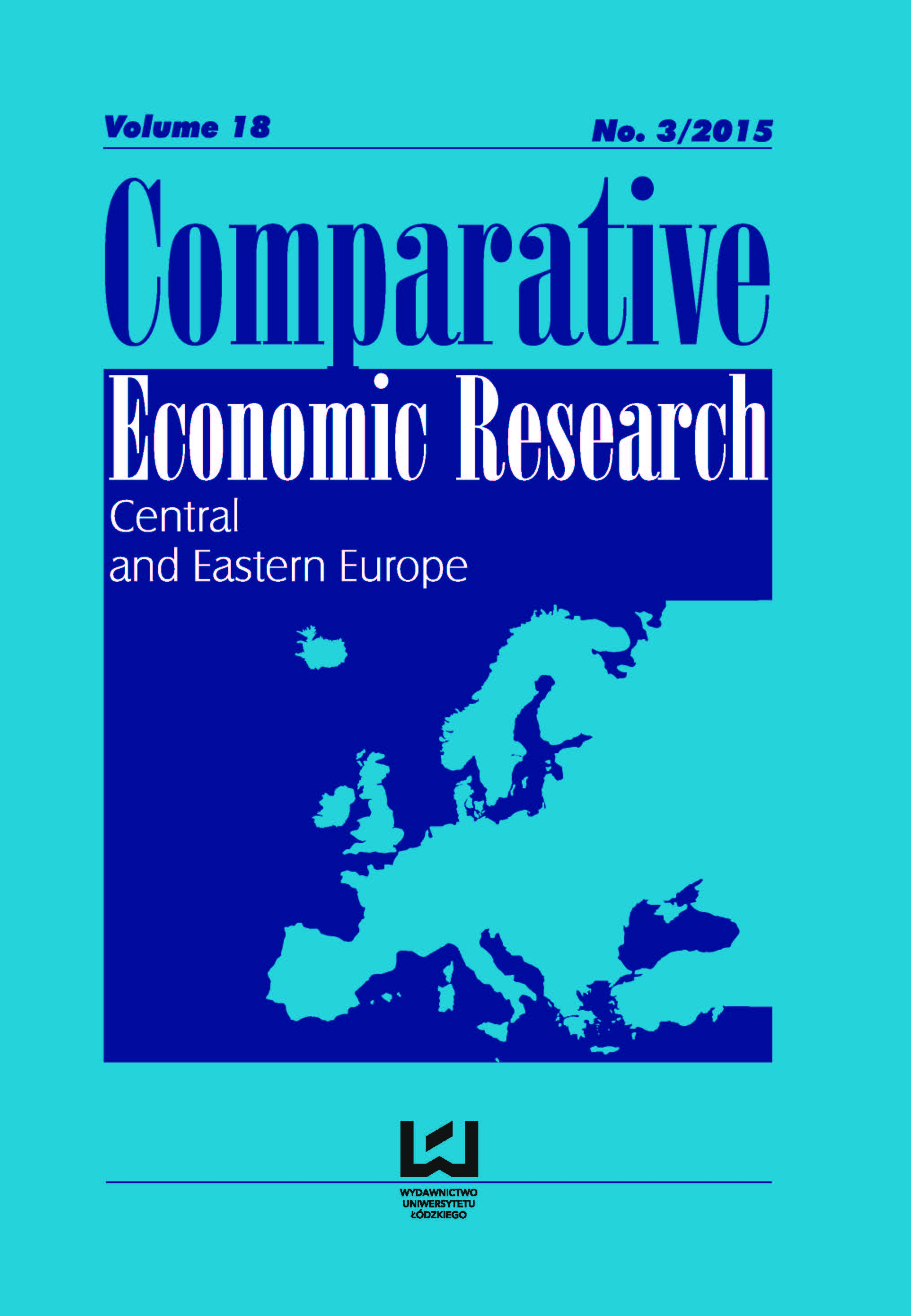A Comparison Of GDP Growth Of European Countries During 2008-2012 From The Regional And Other Perspectives
DOI:
https://doi.org/10.1515/cer-2015-0018Keywords:
economic growth, European Union, international economics, European regionsAbstract
The aim of the article is to compare the total real GDP growth of European countries from the 3rd quarter of 2008 with the 3rd quarter of 2012, the period characterized by a predominant economic stagnation or economic recession in the majority of examined European countries. The countries are divided into groups based on the following grounds: whether they are geographically close to the economic center (Germany) or peripheral, whether they are in the eurozone or not, whether they are (new) EU members or ‘old’ ones, etc. The main findings from the comparisons are as follows: 1. European countries close to the economic center (Germany and its neighbours) experienced, on average, positive economic growth during examined period, while countries from European periphery on average experienced negative economic growth during the same period. This difference was found statistically significant at the α = 0.01 level. 2. Differences between eurozone and non-eurozone, old and new EU members, and between more and less populated countries were found statistically insignificant. 3. European regions with the most negative real total GDP growth included the Baltics, the Balkans, Southern Europe (Italy, Portugal) and Iceland. The most successful countries with the most positive real total GDP growth were central European countries (Poland, Slovakia, Germany, Switzerland, Austria) and those in northern Europe (Sweden and Norway).
Downloads
References
Aiginger K. (2013), A new strategy for the European periphery, WIFO Policy Paper, no. 1.
Google Scholar
Aiginger K. (2011), Why Performance Differed Across Countries in the Recent Crisis How Country Performance in the Recent Crisis Depended on Pre-crisis Conditions. WIFO Working Papers, No. 387.
Google Scholar
Beblavý, M., Cobham, D., Ódor, L. (Eds.) (2011), EURO area and the financial crisis, 2011. Cambridge University Press.
Google Scholar
Garcia-Arias G., Fernandez-Huerga E., Salvador A. (2013), European Periphery Crises, International Financial Markets, and Democracy, ʻAmerican Journal of Economics and Sociologyʼ, Vol. 72, Issue 4.
Google Scholar
Eichengreen B. (2009), The Crisis and the Euro, ʻInternational Economy and Trade Working Paper 23ʼ.
Google Scholar
Eurostat (2014). Available from: http://www.eurostat.eu
Google Scholar
Kajaks J. (2013), The economic and social situation in the Baltic countries: Latvia - Study. European Economic and Social Committee.
Google Scholar
Karasavvoglou A., Polychronidou P. (Eds.). (2014), Economic Crisis in Europe and the Balkans: Problems and Prospects, Springer.
Google Scholar
Kattel R., Raudla, R. (2013), The Baltic Republics and the Crisis of 2008 - 2011, ʻEurope-Asia Studiesʼ, 65(3).
Google Scholar
Knibbe M. (2011). Why Poland and Sweden escaped the crisis, to an extent, and some other Baltic states didn’t. Available from: http://rwer.wordpress.com/2011/10/25/why-poland-andsweden-escaped-the-crisis-to-an-extent-and-some-other-baltic-states-didnt/
Google Scholar
Matei D. (2010), The Role of the Euro During and After Economical Crisis, The Annals of “Dunarea de Jos” University of Galati, Fascicle I - 2010. Years XVI - no 1.
Google Scholar
Mazurek J., Mielcová E. (2013), The Evaluation of Economic Recession Magnitude: Introduction and Application. ʻPrague Economic Papersʼ, vol. 2013(2).
Google Scholar
Minchev O. (Ed.). (2010), The western Balkans: between the economics crisis and the European perspective. Institute for regional and international studies, Sofia.
Google Scholar
Pere E., Hashorva A. (2012), Western Balkan´s countries in focus of global economic crisis. ʻThe USV Annals of Economics and Public Administrationʼ, Vol. 12, Issue 1(15).
Google Scholar
Sobják, A. (2013), From the Periphery to the Core? Central Europe and the Economic Crisis, ʻPISM Policy Paperʼ, no. 7 (55).
Google Scholar
World Bank. (2013). Available from: http://www.worldbank.org
Google Scholar
Downloads
Published
How to Cite
Issue
Section
License

This work is licensed under a Creative Commons Attribution-NonCommercial-NoDerivatives 4.0 International License.











